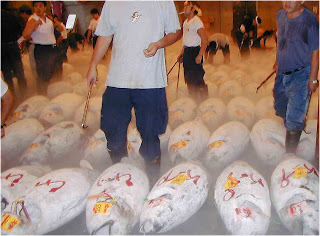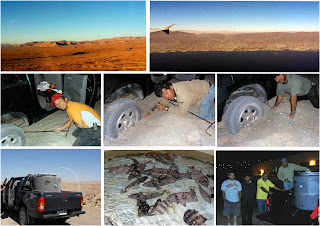Japan fish market

I encountered the same misunderstanding about the cost of fish in Japan market many times. Just like the blue fin tuna, a very variable fish that cost about USD120/100g!!!. Wait, wait !. You should know the story behind that the price comes in particular condition such fish is wild one (not cultured), has a premium quality (freshness, color, texture and contents of lipid) and is served at high class Sushi restaurants in the middle of Tokyo . Furthermore, the premium meat comes only less than 10 % from total body weight that calls "Otoro". The average price of blue fin tuna is USD25/Kg or less and culture one is one half of it. Even so still the price is attractive at developing countries what I understand. So, I commented about Japan market and fish price in Tokyo market on 2004 which is converted to USD. Refer file name "-marketing-japan-050419" at above address or crick "Toshi" at side bar. http://groups.google.com/group/toshif 海外で私は日本の市場における魚の値







